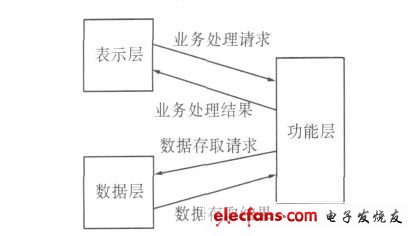The highway is an important infrastructure for national economic development and modernization. It is a linear engineering structure serving automobile transportation. Due to the wear and impact of wheels, it is eroded by natural forces such as rainstorms, floods, wind and sand, ice and snow, sunlight, and ice melting. And weathering, as well as man-made damage and certain defects left over during construction, the quality of highway use will gradually decrease. Therefore, it is necessary to take correct technical measures to strengthen road maintenance, repair and improvement, to ensure safe, comfortable, and smooth driving, and to improve the quality of maintenance work, so as to extend the service life of the road. Many countries regard strengthening maintenance as an important technical policy for highway work, and the proportion of maintenance investment in total highway investment has also increased rapidly, and some have greatly exceeded the investment during construction. With the gradual formation of the national backbone highway network, the mileage of newly-built highways will decrease year by year, and the maintenance and repair of road surfaces will become a hot spot for highway workers. Therefore, how to make more effective use of existing funds, make highway pavement at the best service level or produce the greatest economic benefits, is an urgent problem to be solved in highway management. The collection of Henan provincial highway pavement measurement data still stays in manual mode. It requires road workers to regularly go on the road and manually record the measurement data in a paper form, and then enter the computer for archiving and archiving by specialized personnel. Multi-level units report on multiple levels, and the process is heavy, time-consuming, and prone to errors and omissions. Therefore, the author has developed a road maintenance data collection system that can run on mobile phones, is easy to operate, and reliable. The system can transmit all kinds of collected data to the database server in a timely and efficient manner by means of GPRS wireless network communication technology for road maintenance The staff provided a convenient data collection solution.
1 Analysis of main road highway maintenance data collection system
1. 1 Development Model of Mainline Highway Maintenance Data Acquisition System
C / S (Client / Server) mode is a client / server mode. It is a mode that gradually grew with the development of network databases and desktop graphical interactive windows and development technologies in the 1980s. In the C / S structure, all clients are connected to the database server, the server is responsible for data processing, and the client is responsible for interacting with the user and sending requests to the background server. For user requests, if the client can meet the result, the result will be given directly, otherwise it will be handed over to the server for processing. Therefore, this mode can reasonably balance transaction processing and fully guarantee the integrity and consistency of data. Its characteristics mainly include: It can organically combine distributed processing and centralized data operation; the server is transparent to users; it has strong interactivity and can handle a large number of timely data streams; realize safe data access; all the software provided It is a complete set of client and server, which is a paired, point-to-point, frame-like structural mode; compared with the B / S mode, the processing speed is faster; In addition, the functions supported by the development tools of the C / S structure Development tools higher than B / S structure.
The traditional 2-layer C / S structure has the following limitations:
(1) It is a single server and is centered on the local area network, so it is difficult to expand to the WAN or Internet of large enterprises;
(2) Limited by suppliers;
(3) The combination and integration capabilities of software and hardware are limited;
(4) It is difficult to manage a large number of clients. The 3-layer C / S structure divides application functions into three parts: presentation layer, function layer and data layer. The solution is to clearly separate these three layers and make them logically independent. A typical 3-layer C / S structure is shown in Figure 1. This system uses 3 layers C / S structure to realize development.

Figure 1 3-layer C / S structure
1. 2 mobile phone selection principles
1. 2. 1 Convenient
The developed system can install the program to the mobile phone by connecting to the PC, or directly copy it into the mobile phone expansion memory card and install it.
1. 2. 2 with Internet access
After the system is logged in, the download of the basic road data, the upload of the collected data, and the later update procedures all need to be realized by the mobile phone network, so the selected mobile phone needs to have network functions anytime, anywhere.
1. 2. 3 Support JAVA
The program data acquisition system is intended to be written with highly portable JAVA programs, so the mobile phone needs to support JAVA programs.
The range of mobile phones available for this study is wide, such as Dopod, Samsung, etc., which can support JAVA programs and mobile phones with GPRS Internet access.
Solar Panel Inverter,Solar Power Panel Inverter,Full Power Panel Inverter,Solar Panel Hybrid Inverter
GuangZhou HanFong New Energy Technology Co. , Ltd. , https://www.zjgzinverter.com